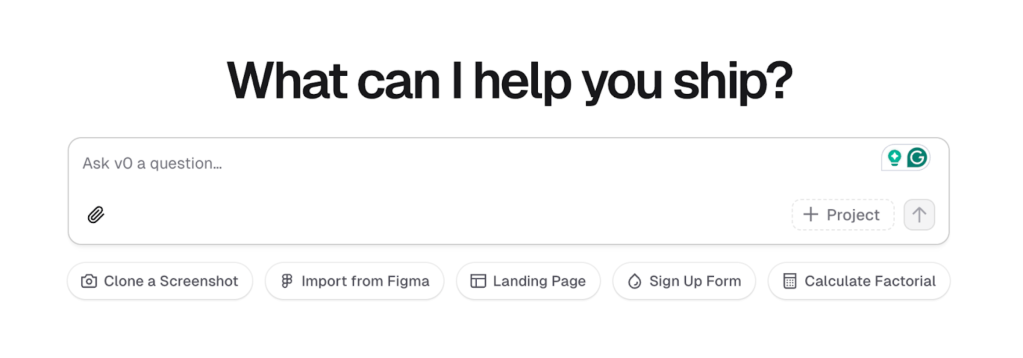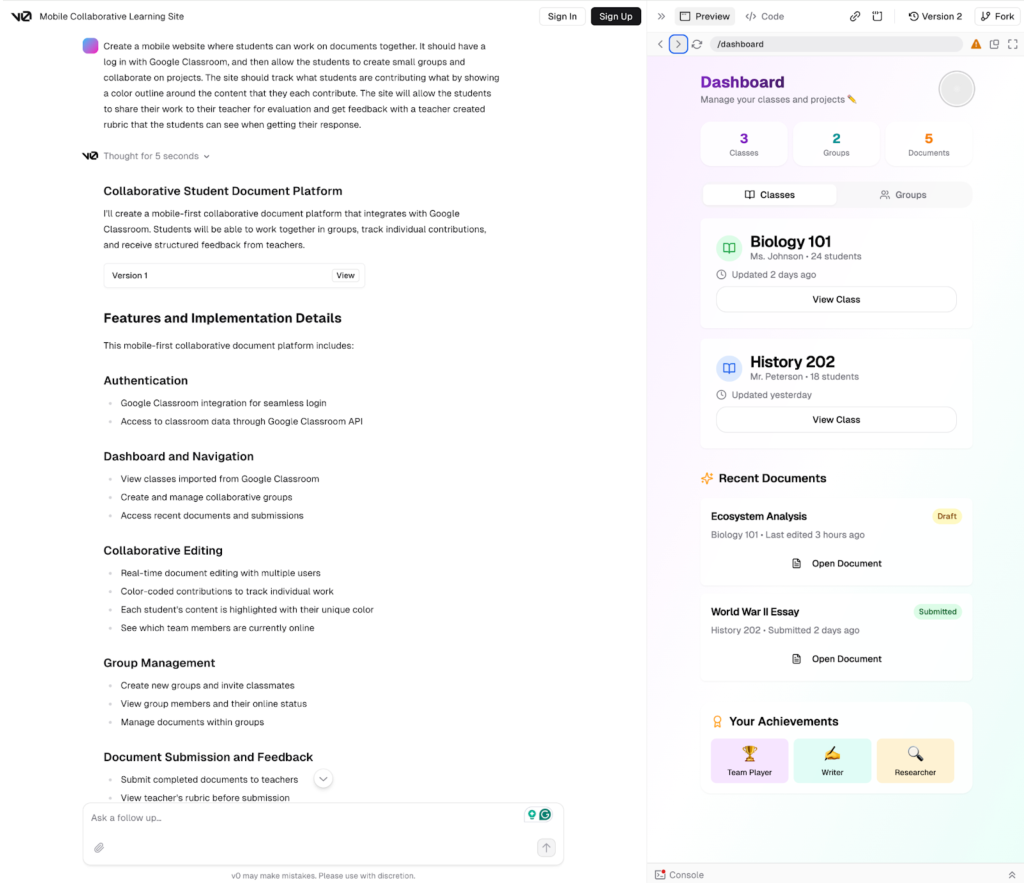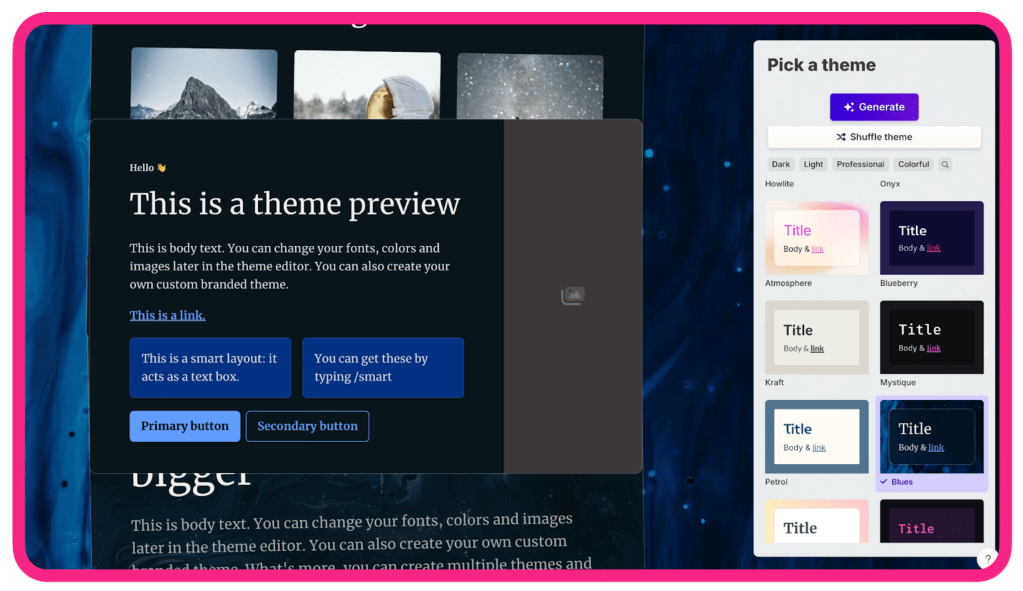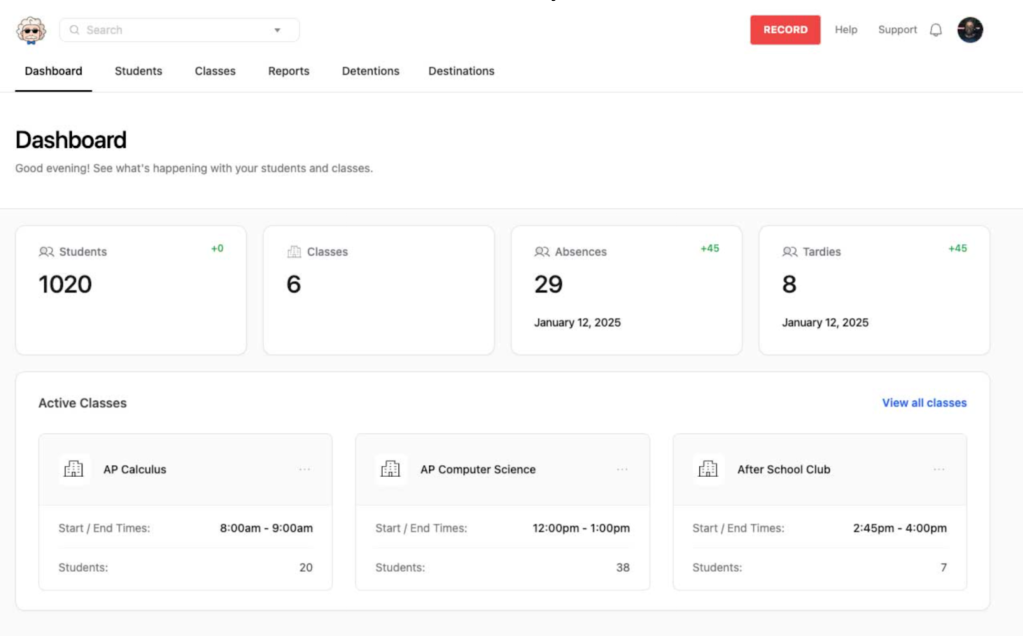3 Powerful, Hidden Gem Tech Tools
FETC 2025 presenter and edtech aficionado Adam Bellow shares three impactful, lesser-known tools that can benefit students and staff alike.
Your content has been saved!
Go to My Saved Content.We live and teach in remarkable times. I’m reminded of this each year at the Future of Education Technology Conference (FETC), held in January. At the event, I’ve had the opportunity to be part of the exciting TechShare Live session. It’s a highlight for me because I get to team up with a panel of brilliant edtech minds to share some of the most interesting new tools we’ve discovered. There’s so much out there that even a longtime edtech explorer can feel overwhelmed.
Here are three tools I’ve enjoyed experimenting with that could enhance your practice or support student learning in the classroom.
1. v0
v0 (v0.dev) is an artificial intelligence (AI)–driven website and app generator (it’s a freemium model: free to use, and you pay to access additional features). Start by describing what you need—say, a class hub for student assignments, an after-school sign-up portal, or even a basic mobile app—and v0 produces a working model. If you have a Figma mock-up, a screenshot, or even a roughly drawn design on paper, the system can convert those visuals into functional code. The site can also guide you through the next steps to make your creation accessible online.

Designing and coding from scratch can feel overwhelming and time-consuming, especially for busy educators or students without a programming background. By automating the setup process, v0 lets you skip some of the heavy lifting, creating an easily editable starting point.
How to use it:
- Teachers. School staff can build and test small building-specific web apps—like a microsite for a school function—without needing a separate IT team.
- Students. Students can propose any idea—like a website based on a specific class project, or a site for a club or school event—and quickly launch a prototype. They can then explore and modify code, learning development skills in a hands-on way.

Why choose v0?: While traditional website builders rely on ready-made templates, v0 creates custom solutions from your description or design. You can keep things simple or delve deeper into the generated code to personalize every aspect, providing both convenience and flexibility. This allows you and your students to focus on the need rather than the technology. I particularly like the fact that you can edit and play with the code it produces, which helps learners backward-map how things like a website or an app actually work.
This all serves as a valuable building block for students—allowing them to explore and experiment with code to reach an initial or deeper understanding of structure, layout, and the process of making changes. For students whose focus is on the content or design, it makes the technical pieces much easier and less threatening. For those who are interested in development, it provides a great sandbox to play in where easy connections can be built on how things work and why.
2. Gamma
Gamma (Gamma.app), a freemium model, is an AI-powered presentation builder. You can provide text, images, or general ideas, and Gamma auto-formats everything into an appealing, coherent presentation. After the draft is generated, you can refine slides, pick color schemes, and rearrange content as needed.
Preparing a polished slide deck can be time-intensive, especially if design isn’t your strong suit. All of us—and students too—can be overwhelmed by a blank canvas. Gamma handles the initial design, so you or your students can focus on the substance—research, organization, and clarity of message—rather than wrestling with slide layouts.

In many cases, students get hung up on the design elements of the presentation or lack the skills needed to execute the core task and become overwhelmed. I’ve seen students copying and pasting information into templates without a lot of intention, resulting in screens filled with text. Alternatively, we’ve all likely seen images slapped on slides without proper citation or a clear connection to the topic.
How to use it:
- Teachers. Use Gamma to create a unit overview or daily lesson slides quickly. The platform’s AI provides you with a starting structure that you can polish further.
- Other faculty. School leaders can rapidly pull together data, charts, and talking points into a sleek deck for staff or board meetings—freeing time for more pressing administrative tasks.
- Students. For presentations on historical figures, scientific concepts, or book reports, Gamma helps students bypass design challenges and focus on the content.
Why Gamma over other platforms?: While lots of tools allow for presentation creation and even offer hosts of templates, Gamma goes further by auto-generating layouts from text prompts. It’s less about dragging and dropping and more about turning your ideas into a professional draft quickly. You still have full control to adjust fonts, images, and layouts, but the AI jump-starts the process.
3. Attendance Genius
Attendance Genius (currently in private beta) is a streamlined attendance management platform created by a practicing teacher. It focuses on quick roll calls, comprehensive reporting, and real-time insights into student attendance patterns.
Educators—especially teachers who have more than one class—know how disruptive and time-intensive managing classroom attendance can be. Many learning management systems include basic attendance functions, but they’re often cumbersome and difficult to navigate or lack access to deeper analytics. Peta-Gaye Bisset, a calculus teacher from Florida, set out to solve this problem by creating Attendance Genius, which aims to simplify the process with intuitive dashboards, custom tagging (for example, unexcused versus excused absences), and immediate data visuals to spot trends like chronic lateness.
How to use it:
- Teachers. Teachers can mark attendance on any device and see a daily snapshot of absences or tardies.
- Administration. School leaders and office staff can generate robust reports for compliance or family communication, saving time over manual spreadsheets or limited LMS modules. By identifying patterns (like repeated Monday absences), staff can intervene sooner to support students and communicate with families before issues escalate.

Why use Attendance Genius with a learning management system (LMS)?: Unlike a one-size-fits-all LMS plug-in, Attendance Genius focuses exclusively on attendance. It provides more detailed tracking, clearer analytics, and user-friendly reporting. Because it was built by an educator for educators, every feature is designed with real-world classroom needs in mind.
ADVICE FOR TRYING NEW TOOLS
Technology can absolutely be a force for good in education, if we use it thoughtfully.
As you consider whether any of these might be a good fit, keep these three things in mind:
- Start small. Don’t overwhelm yourself or your students with too many new tools at once. Pick one tool, use it consistently for a bit, and see if it truly streamlines a task or enriches learning. If it does, keep it. If not, move on.
- Look past the novelty. Ask yourself if a tool genuinely strengthens learning or saves time. Does this tool replicate something I am already doing? Or does this provide me with additional (and needed) functionalities that my class would benefit from? Does introducing the new tool provide more benefit to the majority of the students over current options?
- Stay true to your goals. Technology should amplify your teaching, not distract from it. Ensure that what you’re adding to the classroom experience provides additional value to all learners and doesn’t detract from the objectives you’ve set.
